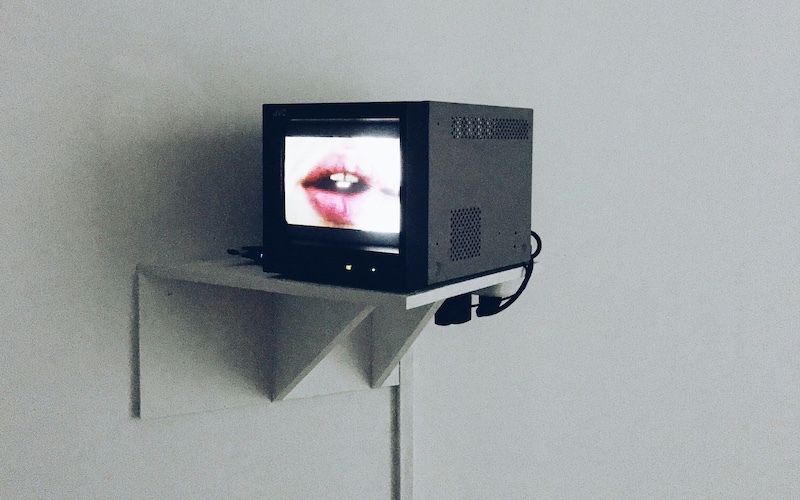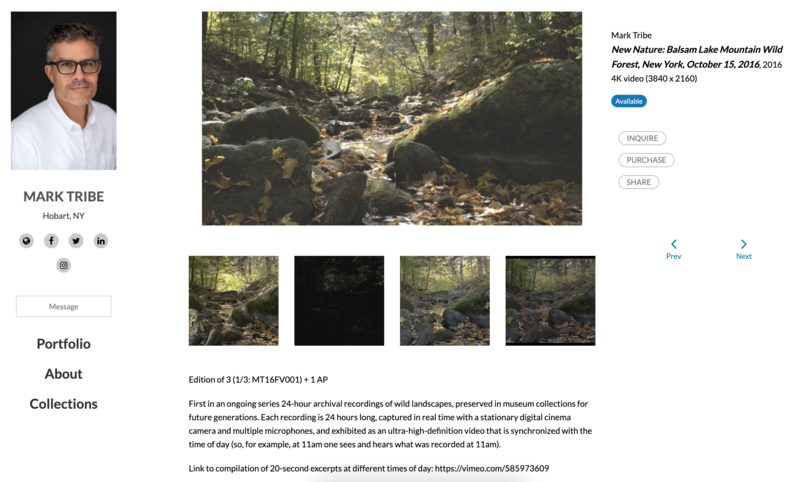 Image credit: Creedi Zhong on Unsplash
Image credit: Creedi Zhong on Unsplash
From documentation to storage, here’s how to organize and protect your born-digital and time-based media art.
As the art world continues to embrace digital technologies, the challenges of preserving time-based media and born-digital artworks are more pressing than ever. Unlike traditional objects, these works—ranging from video installations to digital dance performances—require a specialized approach to documentation, storage, and long-term access.
Why time-based and born-digital art needs special care
-
Obsolescence of Media & Platforms
From outdated video formats to evolving software environments, many digital artworks risk loss due to technical decay. Institutions like the Guggenheim have spearheaded the Variable Media Initiative, prompting artists to outline guidelines for future alternate media once their current formats expire. -
Maintaining Artistic Intent
Preserving digital works isn’t just about file storage—it’s about retaining the viewer’s experience even as technology evolves. Back in the early 2000's a consortium of art institutions launched a project, Archiving the Avant-Garde: Documenting and Preserving Variable Media Art, to propose a new set of rules to document, migrate, and safeguard media artworks. The collaboration included the Berkeley Art Museum and Pacific Film Archive, the Guggenheim Museum, the Walker Art Center, Rhizome.org, the Franklin Furnace Archive and the Cleveland Performance Art Festival and Archive. -
Complex Behaviors and Installations
Time-based media often includes interactivity and networked behavior. Documents like Iteration Reports or the Variable Media Questionnaire capture technical and behavioral data, enabling future re-creations as close to the artist’s intent as possible. These reports can be saved in your collection management system like Artwork Archive.
Best practices for managing digital & time-based art
1. Document in detail
Thorough documentation is the foundation of managing time-based and born-digital works. Go beyond titles, dates, and artist information by capturing technical specifications like software versions, hardware requirements, playback instructions, and installation notes. When possible, create Iteration Reports or Variable Media Questionnaires (VMQs) to record how the work behaves and the artist’s intentions. This ensures that future installations or migrations stay true to the original experience.
2. Build robust metadata
Metadata is more than just a cataloging tool—it’s your roadmap for preserving and accessing works over time. Include descriptive details such as title, medium, and artist, alongside administrative data like file formats, storage locations, rights information, and any preservation actions taken. Adopting recognized standards like Dublin Core or PREMIS ensures your records are consistent, interoperable, and easy to share or migrate in the future.
3. Organize files and track versions
Consistency in your file structure saves time and prevents costly mistakes. Use clear and uniform naming conventions, and maintain organized folders that distinguish between master files, access copies, and derivatives. Version control is also key—keep logs or notes documenting updates, format changes, or other adjustments so you always have a traceable record of the artwork’s evolution.
4. Ensure reliable storage and backups
Storing digital works requires redundancy and planning. A hybrid approach—using both cloud-based platforms and local storage—provides security and accessibility. Regularly back up files, store copies in multiple physical locations, and use integrity checks like checksums to ensure files haven’t degraded or been altered over time. These precautions protect against data loss and support long-term preservation.
5. Plan for migration and appraisal
Digital media evolves quickly, so planning for the future is critical. Schedule periodic reviews of your collection to assess which works may need format migration or software updates to remain accessible. This proactive approach not only reduces the risk of obsolescence but also helps control costs by avoiding emergency restoration efforts. Regular appraisal also ensures that only significant and relevant files are preserved for the long term.
 A screenshot from artist Mark Tribe's Artwork Archive Public Profile,.
A screenshot from artist Mark Tribe's Artwork Archive Public Profile,.
How Artwork Archive can help: 6 key takeways
1. Centralized documentation
Capture and store key technical, behavioral, and administrative metadata alongside visual and descriptive records—right where your collection lives.
2. Metadata-rich records
Artwork Archive supports detailed metadata fields and tagging, helping you document formats, versions, and preservation notes consistently.
3. File and image handling
Link or upload digital files—such as videos, installation schematics, or software files—directly to artwork records. Use consistent naming and version control to keep track of technical iterations.
4. Secure storage & backups
Artwork Archive leverages cloud storage with built-in redundancy, ensuring your digital assets are safe, backed up, and accessible across devices.
5. Workflow & collaboration tools
With an activity log, teams—including curators, conservators, and external collaborators—can document changes, add notes, and maintain organized version histories.
6. Long-term access strategy
Prepare the groundwork for future migrations or re-creations with built-in documentation fields for preservation policies, iteration notes, and technical specifications.
As digital and time-based works grow in significance, institutions and collectors must adopt preservation strategies that go beyond merely storing files. It’s about capturing the intent, behavior, and context of these dynamic creations—and preserving them for future audiences.
Artwork Archive offers the infrastructure to document and organize these digital assets and preserve their essence over time. By integrating rigorous metadata, storage best practices, and collaborative workflows, the platform bridges the gap between complex technical preservation and accessible collection management.




